Can Jelle Geens Defend His IRONMAN 70.3 World Championship on His New Ridley Triton?
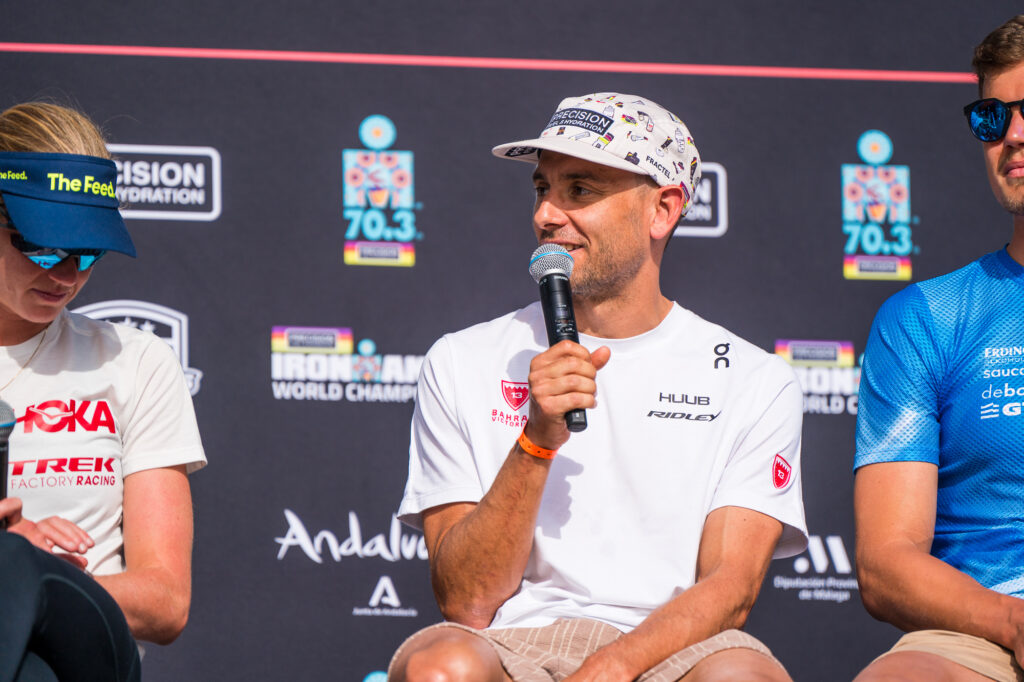
Jelle Geens at the 2025 IRONMAN 70.3 World Championship Press Conference. Photos: Kevin Mackinnon
He’ll be wearing Bib #1 this weekend, but despite being the reigning 70.3 world champion, we haven’t seen him at a lot of IRONMAN events in 2025 – Jelle Geens has focussed on T100 racing this year. The Belgian athlete moved into long course racing after the Paris Olympics and has certainly found success. Although he has focused on the T100 series, where he is currently second to Hayden Wilde, he opened his season at IRONMAN 70.3 Geelong, where took the win.
Big Changes
Geens has gone through a lot more change since Paris. Not only did he move to long-course racing, but he became a father, relocated to Australia and changed coaches, leaving a long and successful partnership with Joel Filliol for Ben Reszel. All the changes also meant leaving the squad environment to train independently.
“ I was quite over short course at the end,” he admits. “And then we were also going to move from Girona where [the squad] was based to Australia. And then I wanted to move from short course to middle-distance racing. So, I was like, if I ever change coach now is a good time.”
“I loved training with the group and like I still have lots of good friends, but I feel like it was also time to try something new and get excited with some new training and a new approach–and I think it worked as well,” Geens continues.

He isn’t wrong. Except for a DNF in Singapore due to a stomach issue, he hasn’t been off the podium at any races this year, with wins at 70.3 Geelong and T100 Vancouver.
“The whole approach is a little bit different,” he says of switching coaches. “Now my training weeks are usually quite big, bigger than before maybe, but then I have some easy days in there as well, which I didn’t used to have with Joel Filiol. Before it was week in, week out, quite a high volume, where now it’s a bit more periodized.”
“I got a bit slower from not doing short course anymore,” he continues. “Although, I feel with my coach Ben, we still work on quite a bit of speed and intensity, but definitely not as much. Now I think I have a lot more endurance to sustain a longer efforts, which is obviously needed.”
Geens is also enjoying having freedom from his federation to set his own race schedule and build his own team. Training independently was a shift, but it has allowed him to set his own daily schedule, which means more time with his daughter, Sienna.
Marbella Prep: Altitude, Chainrings and Light as Possible
To prepare for Marbella, the whole Geens family made the trip to Europe for a three-month stint. They spent time training at altitude in Andorra (his first altitude camp since switching to long course), and then moved down to the south of Spain to finish preparing, including spending some time on the course.
Compared to T100 races, Geens says he will be making “some tweaks.”
“It’s a lot of climbing here, so I’m trying to get my bike a bit lighter,” he says. “My last couple races I have already been on the new Ridley Triton Fast. It’s the new tri-specific bike that Ridley came out with earlier this year, so I’ve been riding that bike quite a bit. But, for this race, I will go with some new speed bars that are quite a bit lighter than the ones I have now. Usually I use a trispoke from Princeton Carbon World, but now I will probably go for just a deep front wheel because it’s also quite a bit lighter and it’s not that much slower.”
His current debate is on chainring size: 56 or 58. (See below for what he decided.)
“I’m still debating,” he says. “I would love to be able to go single chainring at the front, because it’s quite a bit lighter, bit I need to be able to get over the climbs without destroying my legs. But the downhills are very straight and fast. If you can still pedal while you go 75 km per hour, I think there can be an advantage. So, ideally, I would ride a 58, but I also have a 56 I can use.”
He is also considering his nutrition in terms of weight. He will stick to using his usual 2 x 2L with 120 g carbohydrate per bottle, but he will ditch his 400 ml frame bottle to save the weight.
The total amount of climbing might be informing his equipment set up, but it’s the first climb in particular that caught his attention for tactics.
“ Having this big climb after 10 km on the bike, I feel like it might be, for the first 10 km which are quite flat, it might be a bit chiller, but then I think it’s going to be all out on that climb,” he theorizes.
He also notes the 12-meter draft rule changes the game compared to the 20 m rule in T100, but, even more so, the mix of T100 athletes and IRONMAN athletes will make it a unique race.
The Competition
One thing Geens has yet to do in middle distance is take on the Norwegian hype train.
“I’ve never raced the Norwegians over middle-distance racing, only in short course,” he says. “So I’m very curious and excited to see how I stack up against them. That will bring a whole new level, I reckon.”
“Like every championship race there will be a lot of good people there, but then also some people missing due to injuries or other priorities and those who are not qualified,” he says. “It’s always like that. When I won last year in Taupo, people might say there were no Norwegians there and this year they might say Wilde isn’t here. But you can only race the athletes that are there, and it will still be a stacked and very fast race.”
One thing Geens has learned about world championship level racing, no matter who is there or who isn’t, is that it’s always “quite relentless.”
“You can’t have an off day, or even be a couple percentages lower,” he explains. “Especially in short course where everything is so close together. If you run two or three seconds per kilometer, slower than you think or you normally do, that can cost you 20 or 30 spots. And then, in middle-distance racing, it’s the same. I feel like you do have a bit more in your own hands, especially for me as a weaker swimmer in short course. A bad swim could mean my race to win was basically over, whereas in middle-distance racing, you can do a lot more in the bike and the run, especially the bike because it’s non drafting.”
“But there again, if you’re a little bit off, it’s a tough and long day, and at world champs it’s going to be another level again,” he adds.
Jelle Geens’ Ridley Triton FAST


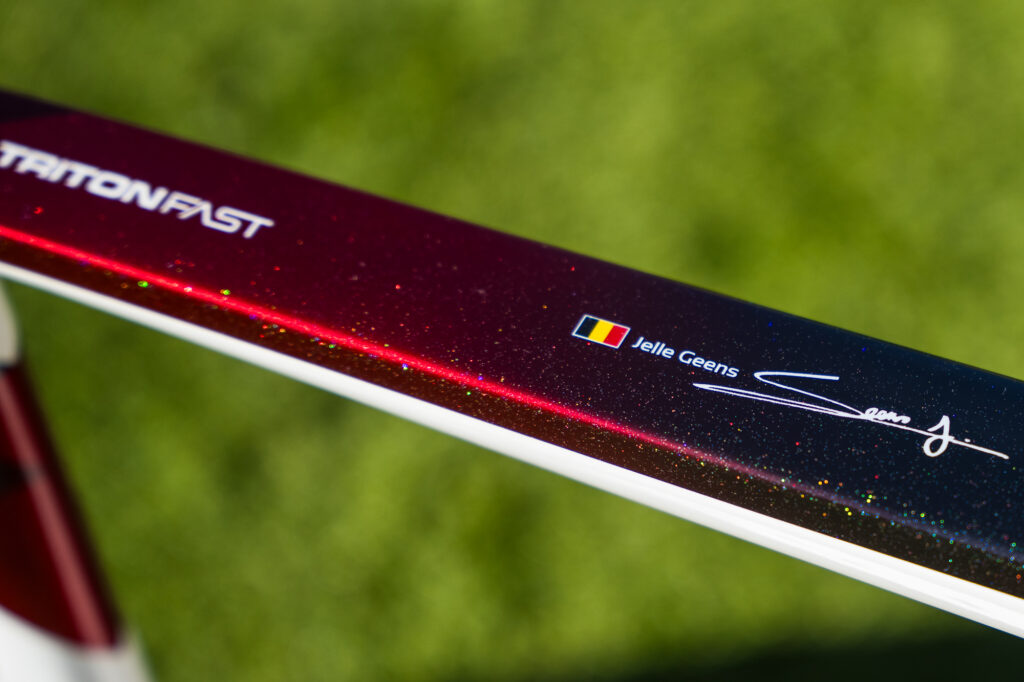
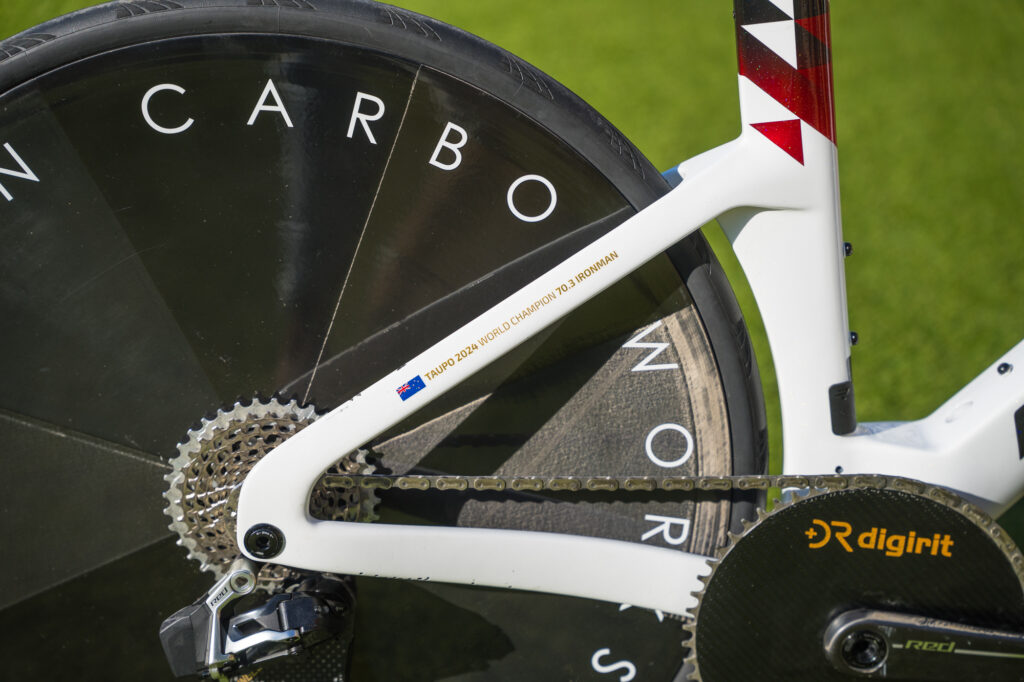
Drivetrain
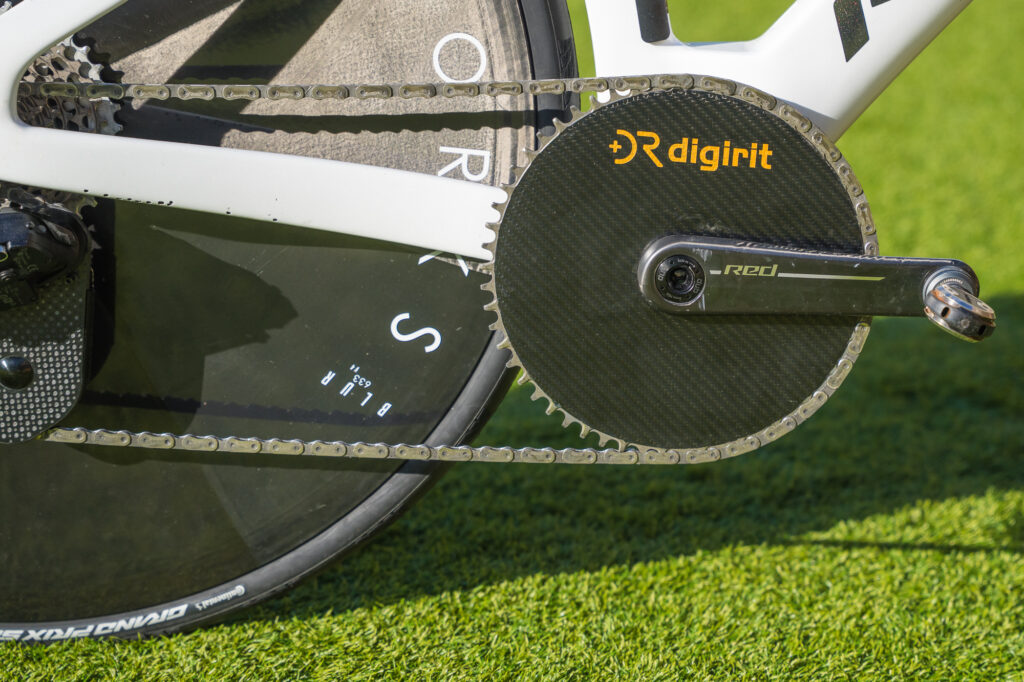
| Groupset | SRAM 1X |
| Chain Rings | 58 Digirit |
| Crank Length | 160 mm |
| Power Meter/Pedals | Wahoo Power |
| Cassette | 10-36 |
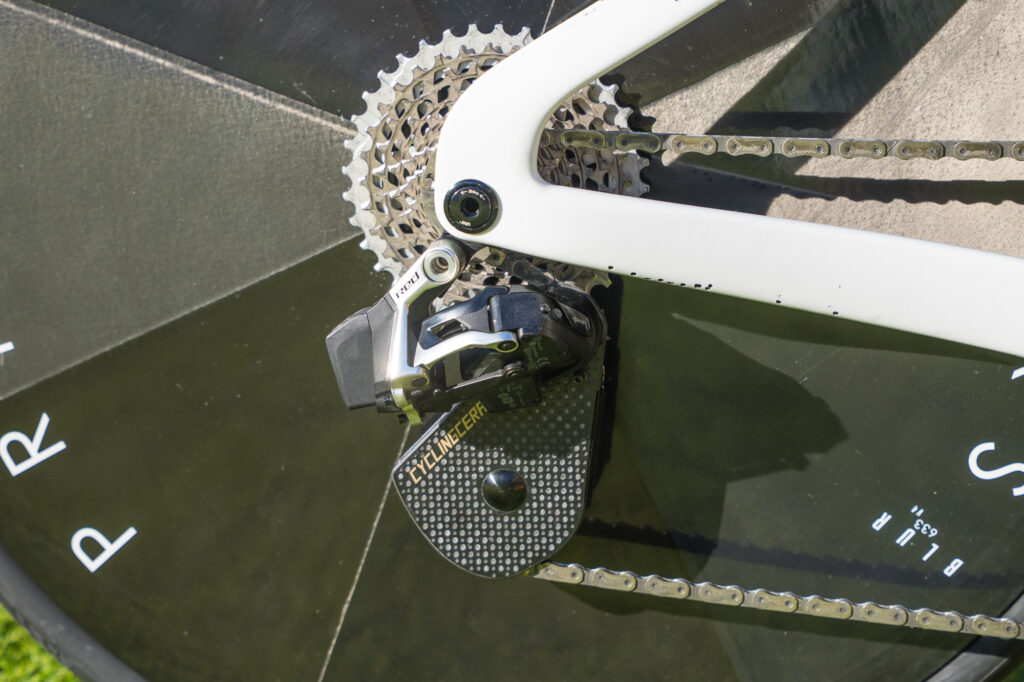



Cockpit
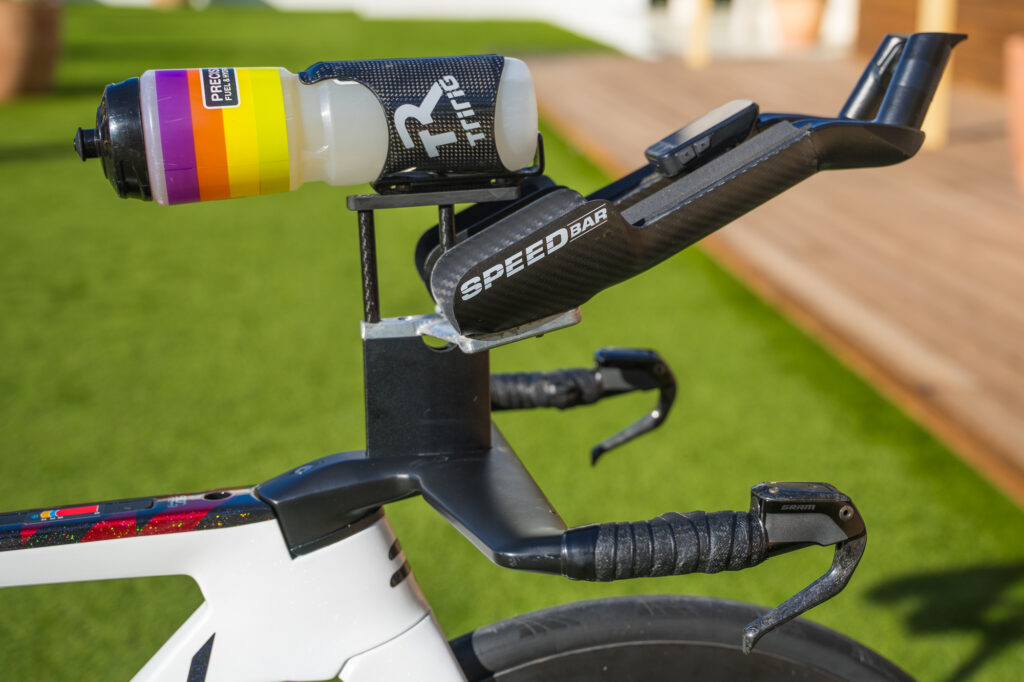
| Aerobar | Speedbar Pro Lightweight Edition |
| Front Hydration | BTA with TriRig cage |
| Bike Computer | Wahoo Bolt |
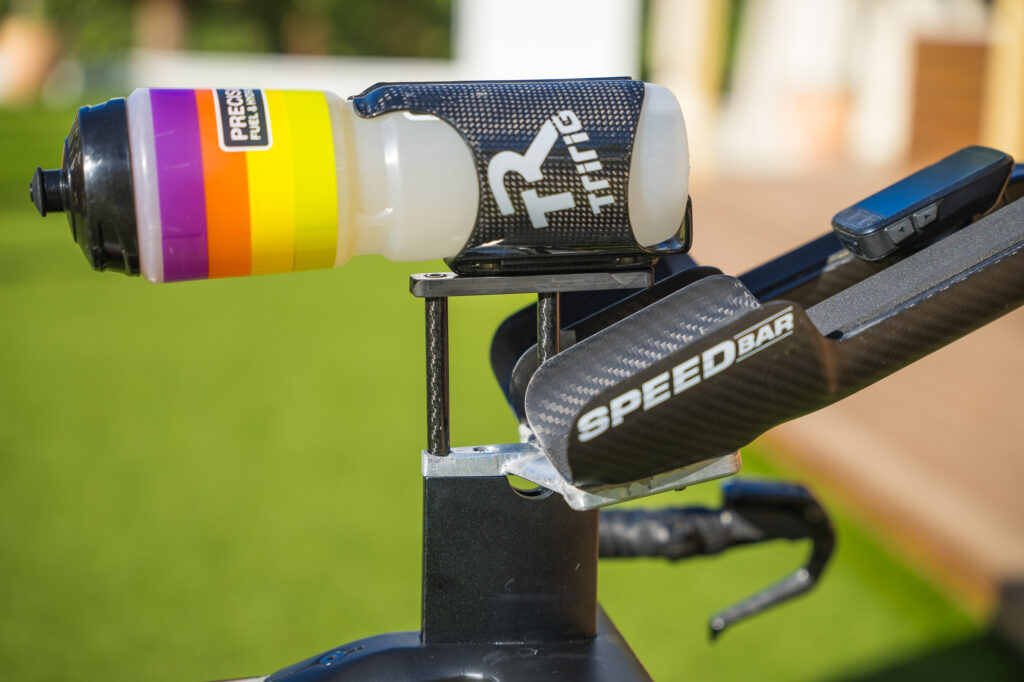
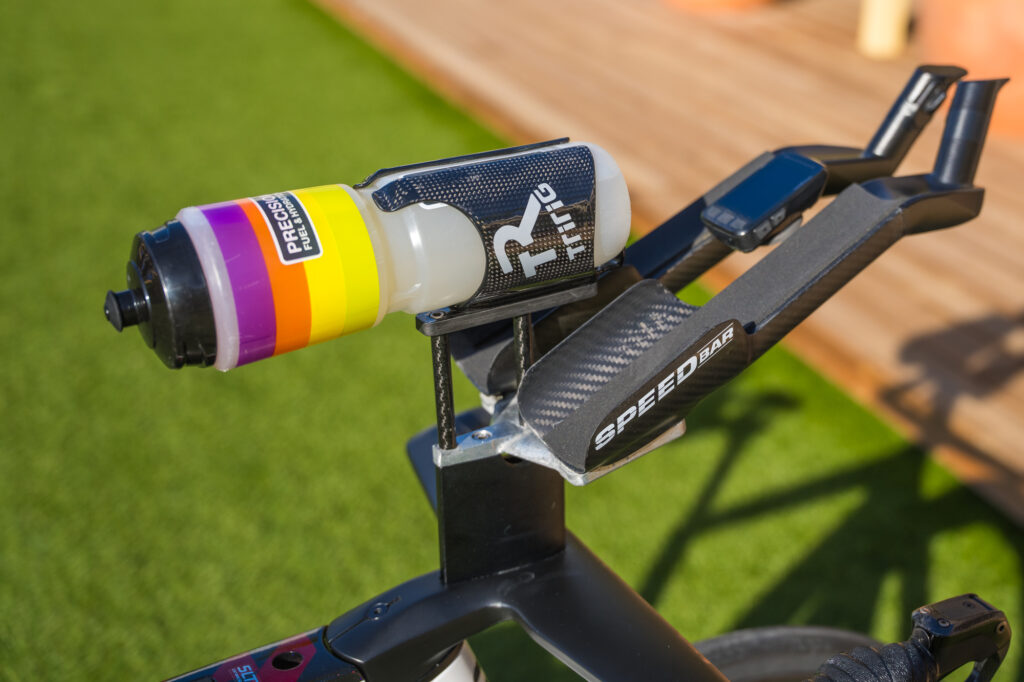

Rear Hydration and Saddle

| Hydration Mount | EZ HydroGains |
| Hydration | TriRig Bottle |
| Saddle | Dash G3 Standard |
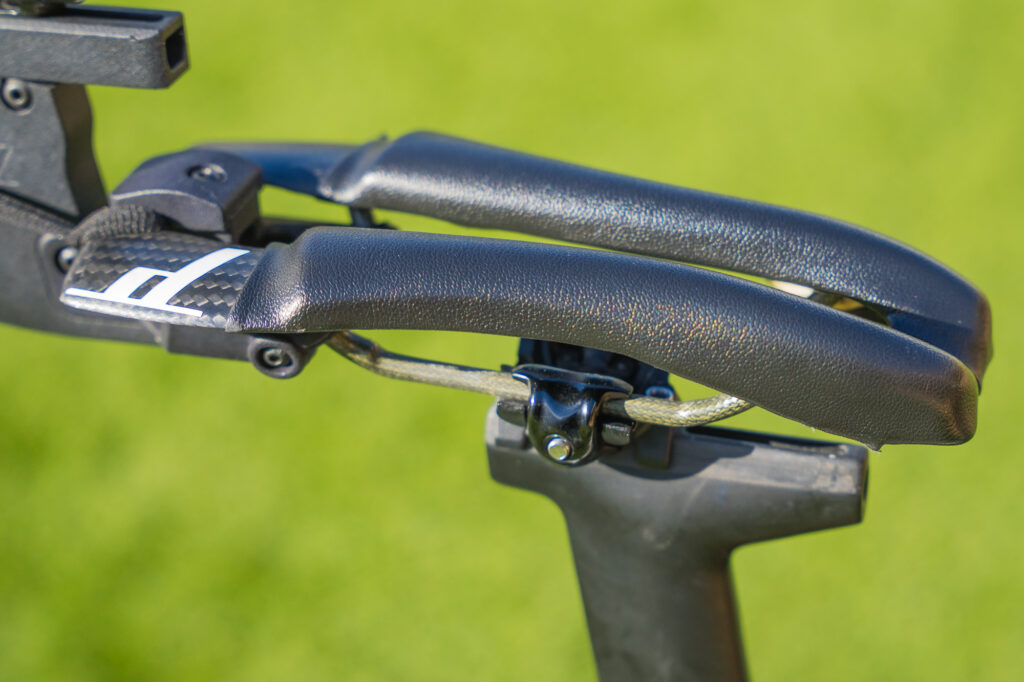
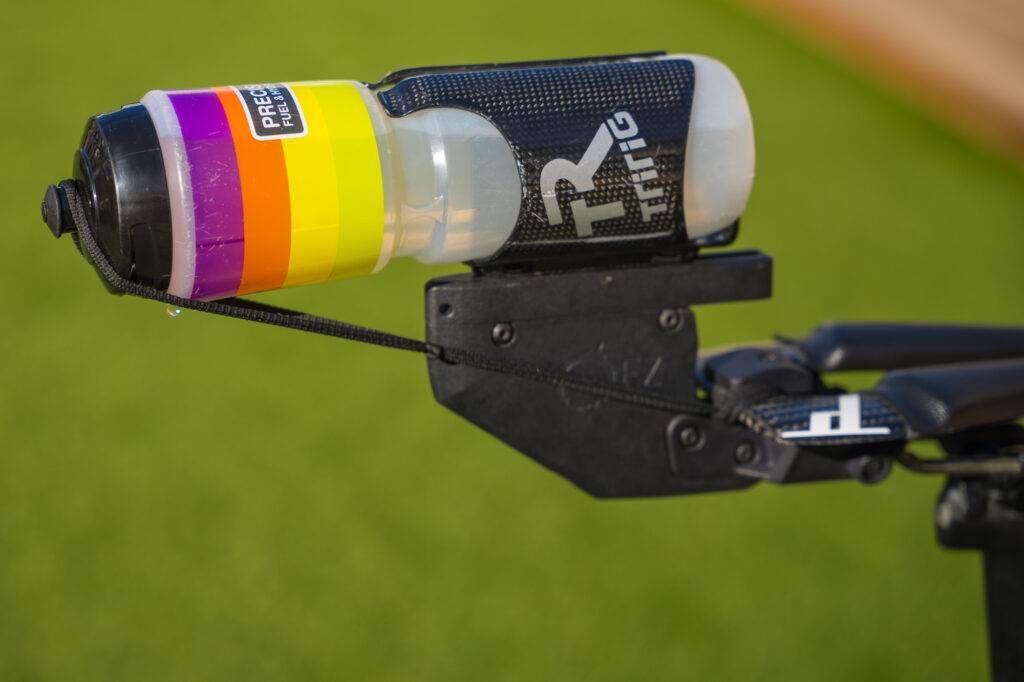
Wheels
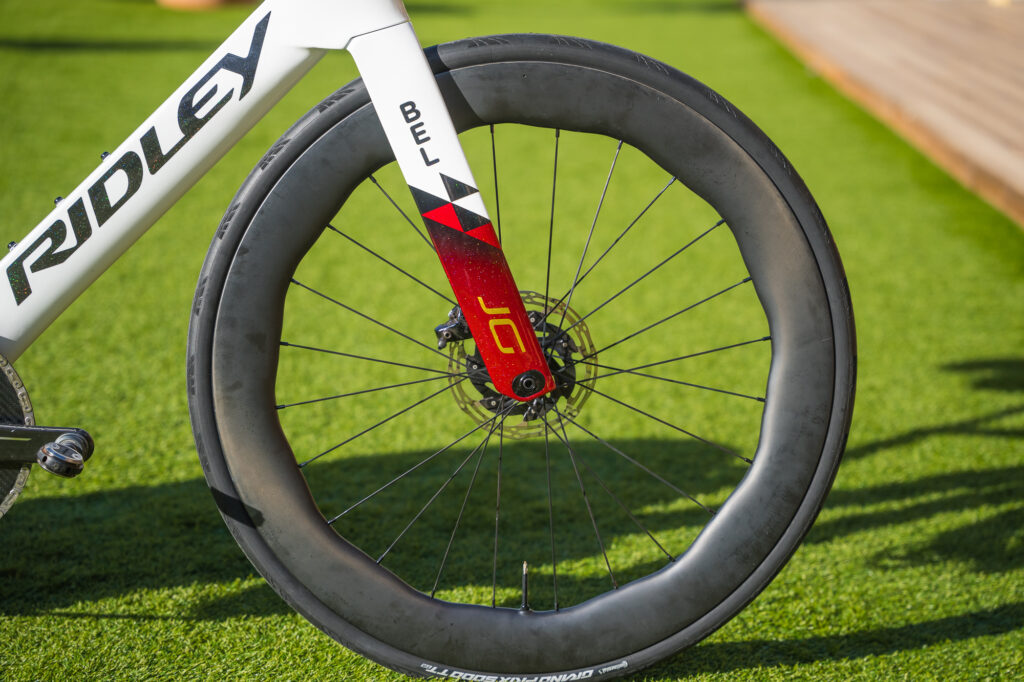
| Front and Rear Wheels | Princeton Wave 6560 Evo 2 + Blur Disc |
| Tires | Continental GP 5000 TT 28mm |
| Pressure | TBD – 4.6 to 5 bar |





Rear hydration: you got it wrong, it’s EZ HydroGeens!